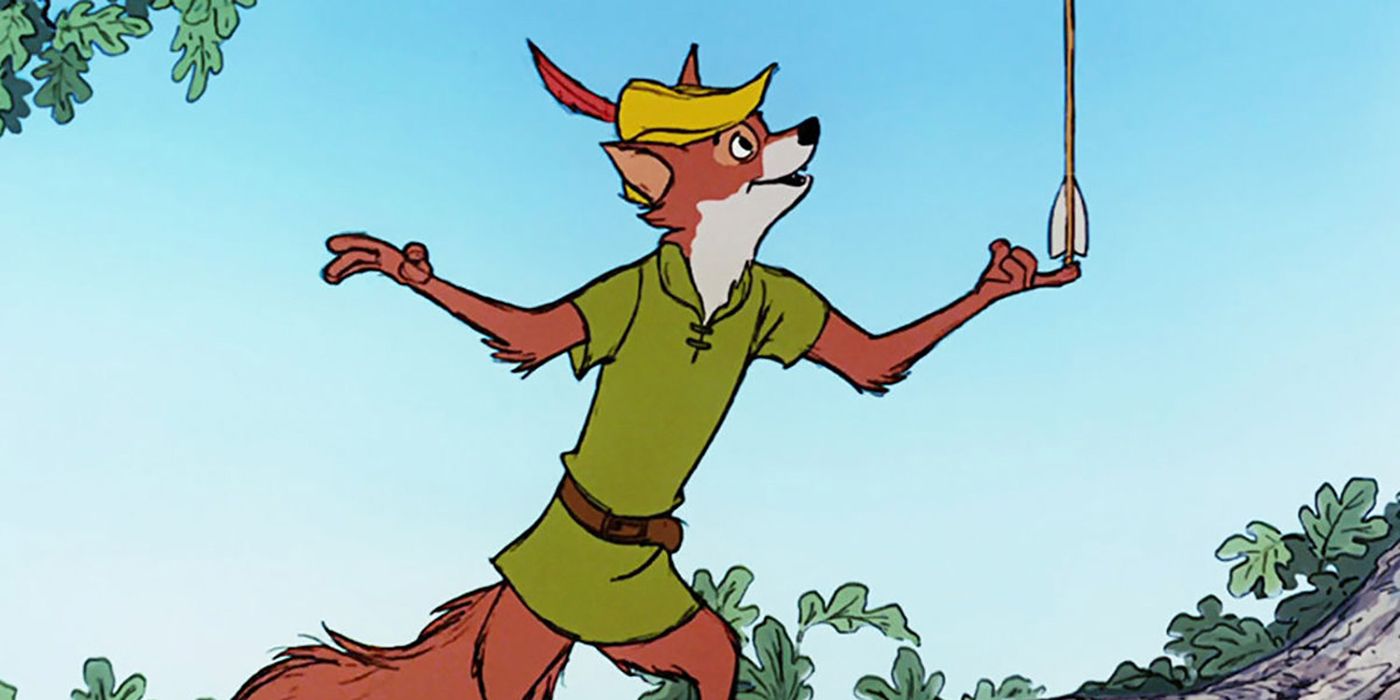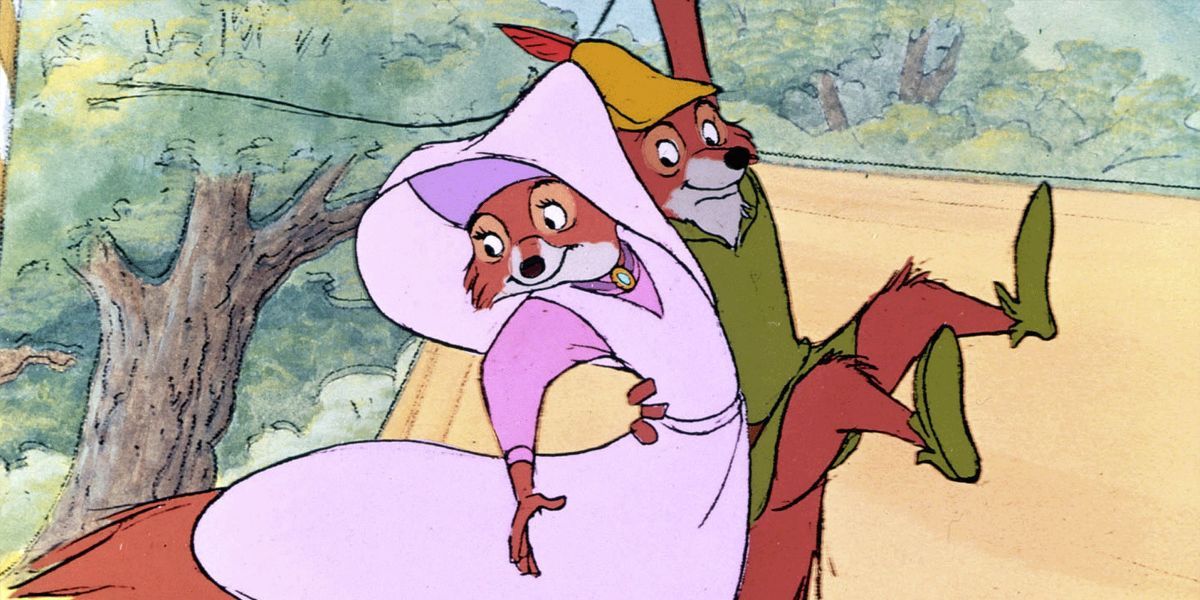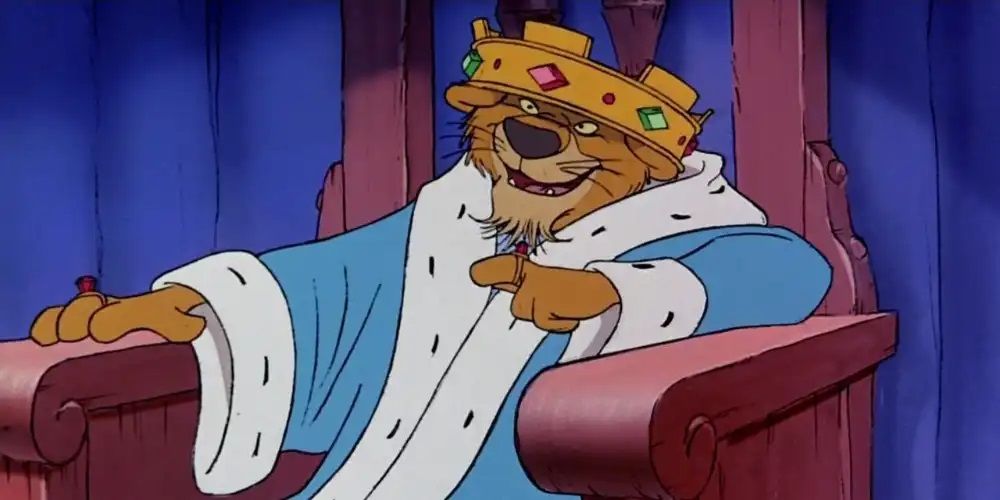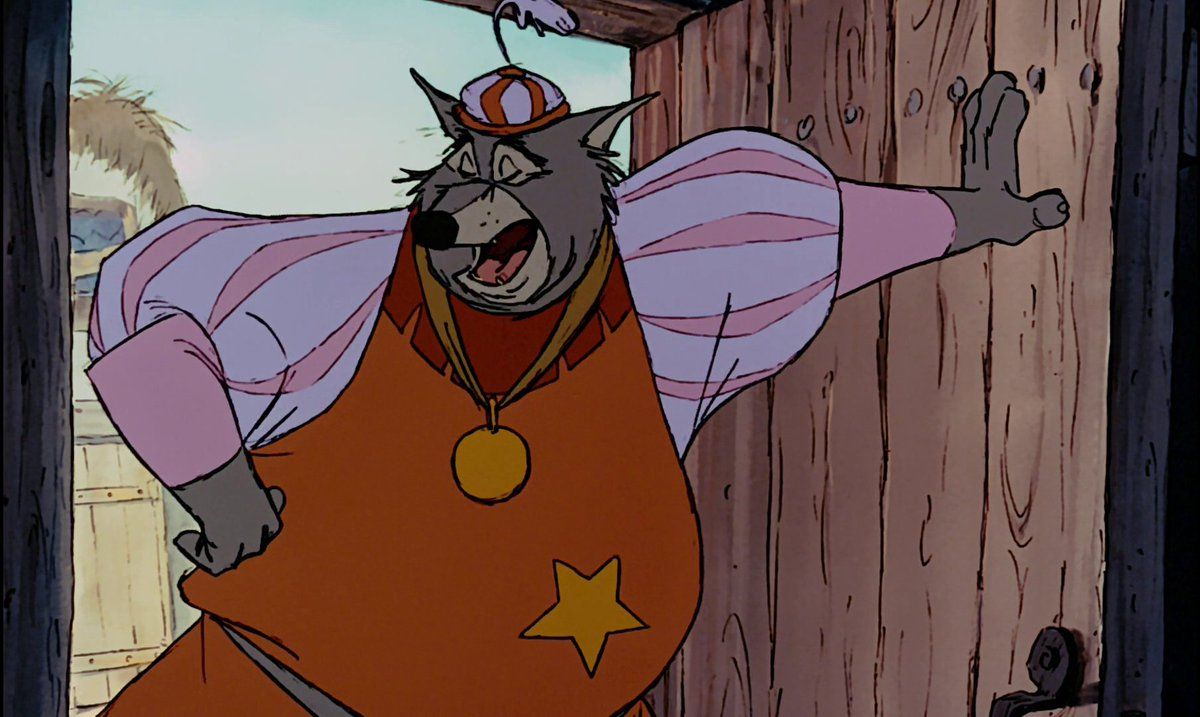You’d think that if Disney wanted to make an all-animal animated adaptation of a legendary outlaw’s story with a fox playing said outlaw, they’d go with Zorro. The studio had had a hit with the character in their 1950s TV series, they maintained a claim on the rights, and Zorro is literally named for a fox. But instead, Disney animation released Robin Hood in 1973 and has spent the years since trying to live it down.
It's not on account of business that Robin Hood is something of a black sheep for the studio -- it made money. It's also not without its fans. Zootopia director Byron Howard likes it, it’s on the list for a remake (because who doesn’t want to see a talking cartoon fox in “live action”), and reviews at the time of its release were mixed-to-positive. But for the generation of Disney artists who worked on it, still not recovered from Walt Disney’s death in 1966, Robin Hood represented a creative nadir.
Watching it again, it’s hard not to agree. With due apologies to relatives who grew up loving the film, Robin Hood is as safe and as bland a cartoon feature as you’re likely to find. There are flashes of charm and light humor, but none of the inspiration or brilliance from the best of Disney’s work. The story – and I use that term loosely – tells a handful of popular Robin Hood adventures without much connective tissue and without a central focus. Robin himself, and Maid Marian, aren’t much more than a generic hero and damsel. And so much of the film, figuratively and literally, is recycled from past Disney efforts.
How did Robin Hood end up as such a retread? It isn’t as if it were made by second-string talent aping their betters. The creative forces behind the movie were among the top animators, designers, and directors at Disney, some of Walt’s most valued workers. But in that fact, there is much to learn about why Robin Hood is the way it is.
Before the Fox, There Was … a Different Fox
Walt Disney never touched the Robin Hood legends – for animation, at least. He produced The Story of Robin Hood in 1952 to burn off frozen British assets (and got a pretty good film for his money), but that was it. He was, however, interested in working with cartoon foxes. In the immediate aftermath of Snow White and the Seven Dwarfs’ runaway success, the studio chased down as much potential material for new features as it could, and among the stories considered was that of France’s legendary trickster, the anthropomorphized Reynard the Fox.
Tales of Reynard’s mischief go back to the Middle Ages, and adaptations abounded across France, Germany, and Holland. Walt first ordered investigative development on the character for animation in 1937. But as Disney expert Jim Korkis has pointed out, there was a problem: Reynard is a rather amoral and underhanded trickster who inflicts and is threatened with grisly violence. Even if Walt was prepared to offer his audience a tale of black humor and gray deceivers – and he wasn’t – the teeth of the Hays Code would have precluded a straightforward adaptation. Writers came and went from the project over the years, and it occasionally came within sight of a green light. But Walt was never satisfied with it.
Some treatments explored combining Reynard with other stories. There was real thought given to incorporating animated Reynard segments into 1950’s Treasure Island, as parables used by Long John Silver to teach Jim Hawkins and persuade his pirate crew. And in 1960, the fox was paired with a bird, a fellow French animal character known as Chantecler. The Gallic rooster’s play formed the spine of the new approach, with Reynard cast as the villain. A dedicated team poured their guts into a contemporary, Americanized approach to follow up One Hundred and One Dalmatians. But a tightening financial situation forced Walt to scale back the animation department’s workload, and forced to choose just one project to advance, he rejected Reynard and Chantecler again in favor of The Sword in the Stone.
Recycling in The Post-Walt Disney Years
One of the chief architects of the rejected Chantecler film was Ken Anderson, a longtime art director, production designer, and story artist for Disney. Anderson was an enormous talent who helped usher in a sea change in the studio’s style through his work on One Hundred and One Dalmatians. But he was also – if writer Steve Hulett is to be believed – a stubborn man who could charitably be called upset over various rejections from Walt, Chantecler among the worst. Loathe to give up all that work, Anderson thought he found a way forward when he decided to ditch the rooster and transform Reynard into Robin Hood. The fox could connive and trick all he wanted now, so long as it was to care for the poor and defy the usurper, Prince John. And a whole menagerie could come along to play all the parts of the legend!
Anderson initially wanted to push this adaptation further than using animals. Like the aborted Chantecler, his first pitch was an Americanized story. This Robin Hood would have been set in the deep South, and Anderson pointed to Song of the South as a model. But even in the early 70s, the reputation of that film was souring (per Jim Hill Media), and firm orders came down to keep Robin and his friends in Merrie Olde England.
Sensitivity wasn’t the only reason for the change. When Robin Hood entered production, it did so as the first animated feature not given the green light by Walt himself. Producer-director Woolie Reitherman, who had directed or co-directed every animated feature since Sleeping Beauty and served as one of Walt’s trusted “Nine Old Men” of animation, had inherited responsibility for the department. Reitherman was adept at action and pace, but like nearly everyone in a position of authority at the studio, he was thrown by Walt’s death in 1966. Faced with a major hurdle in development, the common mantra at the studio became “What would Walt have done?” It was a question born of desperation. Walt was so pivotal to the life of his studio and so exacting on major decisions that no one knew what to do without him around. And as animator Ward Kimball pointed out, Walt was constantly changing his mind and challenging what people assumed he would go for while alive – how would anyone have a prayer of guessing his wishes when he was dead?
Safe Script, Safe Cast, Tight Budget
Looking at the Disney output from the late 60s through the 70s, the answer to “What would Walt have done” seems to have been “whatever he was doing when he died” – never mind how different that was from his work in the 50s, the 40s, or the 30s. Anderson had tried to innovate with character design and casting; he had the Sheriff of Nottingham down as a goat, a choice that had the backing of some of the animators. Reitherman insisted he be a wolf instead and pulled the character designs toward conventional Disney fare, something author Robin Allan claims brought Anderson to tears. Besides costing the film a unique villain, the design choices essentially rendered Little John as Baloo with brown fur. The sense of recycling was only increased when Phil Harris was cast and asked to give essentially the same performance he’d given in The Jungle Book.
Harris wasn’t the only repeat performer. Taking his cues from Walt’s final decisions in life, Reitherman cast Peter Ustinov because he’d worked for Disney in the 60s, and initially cast Tommy Steele as Robin for the same reason. The former gives the film badly needed gasps of vitality, while the latter ended up recast, but the casting reinforces the sense that this is a film determined not to do anything new or risky.
The most blatant example of recycling material is in the animation itself. Robin Hood’s artists were, by and large, longtime Disney veterans, with Frank Thomas and Ollie Johnston (two more of Walt’s Nine Old Men) taking the lead. Everything is impeccably drawn, and there are some fine performances wrought with pencil. But protracted story development and a tight budget drove the film overschedule, and to make up time, animation was repurposed in multiple ways. Original animation done for the film was used and reused across scenes. Worse was the lifting of rough animation from four prior Disney films and tracing over it with new characters. Animation buffs have long been able to spot the recycled dance routines and musicianship in the “Phony King of England” number.
The animators weren’t happy about these shortcuts, and some weren’t shy about criticizing the practice and the director in later years. But neither they nor Anderson were in a position to overrule Reitherman, and none of them were any more prepared for a Disney without Walt. Tim Burton, who was first hired at the studio several years after Robin Hood's production, described it once as a place still run by lost men, unsure how to move forward. And the Nine Old Men really were old, or at least middle-aged, by then. Reitherman, Anderson, and others of the old guard continued to work on cartoon features after Robin Hood, but they gradually gave way to the next generation, who brought in fresh eyes and fresh ideas. Disney animation has had its highs and lows since 1973, and some later lows are arguably worse than Robin Hood. But nothing they’ve made since has felt quite so beholden to the studio’s own past successes and cast-offs.




